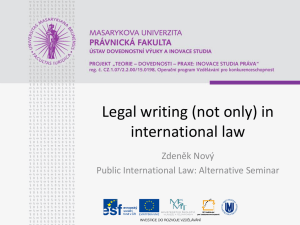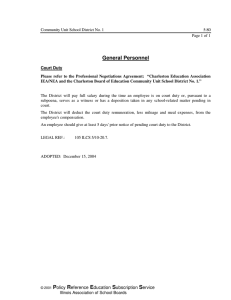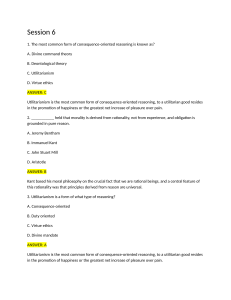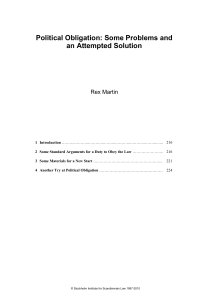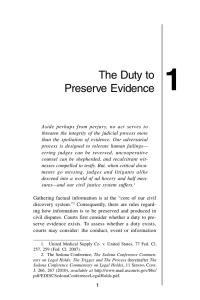Making equal rights real Agnes Callamard, ARTICLE 19
advertisement
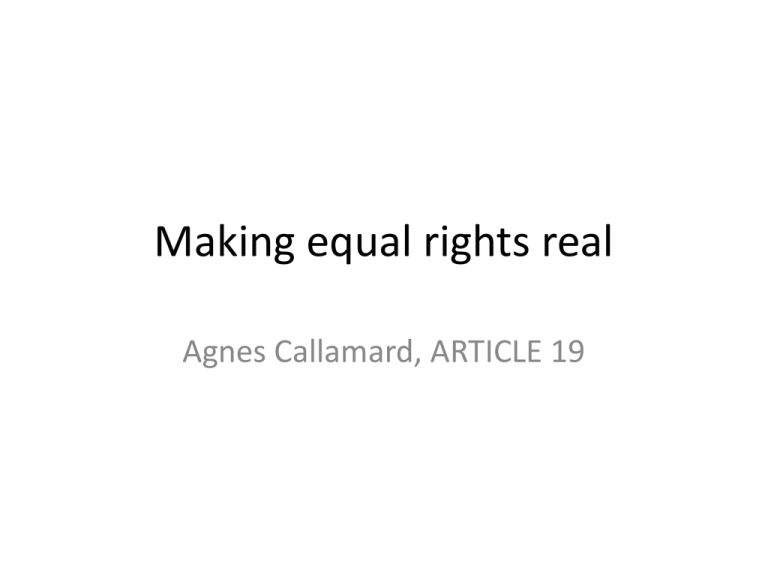
Making equal rights real Agnes Callamard, ARTICLE 19 Global Trends • Slippery slope • Indicators highlight reversal or stagnation • Freedom of expression has been weakened and eroded. • Values or standards which we thought safe have been eroded, eg right not to be tortured • SRR – under threat around the world Legal regression by copycat • A disturbing number of countries levelled burdensome, restrictive or repressive laws and regulations against NGOs and the media, including the internet • Legal ‘deterioration by imitation’: charity, antiterrorism, anti-extremism laws are mirrored across the world The human rights implementation framework • Duty to respect: The government is under a negative obligation not to interfere with the communication of information and ideas that others wished to impart. • Duty to protect: Governments are under a positive obligation to take steps to prevent individuals or private groups from interfering with the lawful communication of information. • Duty to fulfil: Duty to provide information, including government-held information. Access. Positive obligation. The Challenge • No Linear model of rights implementation • Making equal rights real requires working on all three levels at all times: Respect, Protect, Fulfil • Example: right to receive information – governments may pass laws on transparency while at the same times censoring the media Making equal rights real: accessing government-held information The challenges: (i) over 100 countries have not adopted laws allowing citizens to access information; (ii) where laws exist, they do not perform well; (iii) around the world, exercise of the rights limited to the privileged and educated classes, and mostly men To make equal rights to information real, we need: • Tie RTI with economic and social rights: people must see how the law can improve their day to day life, and dignity / basis for the claim of citizens’ empowerment. • Secure Broad-based demands for information – indigenous, health, disability, climate change - demonstrate the power of information To make equal rights to information real, we need: • Pro-poor legal campaign - Broad buy-in: people themselves demand the law • Pro-poor law: the text of the law must be devised with the most vulnerable in mind – how will the poor access and use the law – Pro-active disclosure • Mediators: CSOs and Media keep the issue on the front-burner To make equal rights to information real, we need: • Monitoring compliance: information requests on issues which are relevant to the people, eg public services, budgets, etc. • Advocating for pro-active disclosure • Dialogue with governments officials • Training, training, training – on how to make requests (demand side) and how to respond (public officials) To make equal rights to information real, we need: Holding the government to account through: • Domestic litigation • Public denunciation/campaign, eg through the media • Regional/international litigation • Regional/international reporting To make equal rights real, we need: 1. The best standards 2. Combat ignorance: schools, trainings, continued education, awareness raising 3. Free flow of Information 4. Courage – struggles 5. Organised and committed actors: passion for change – individual leaders; NGOs; social movements 6. Accountability: litigate, denounce at domestic, regional and int’l level
